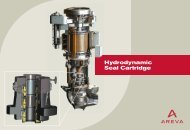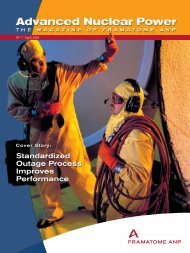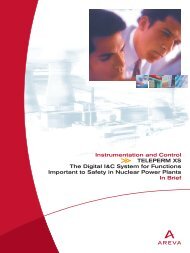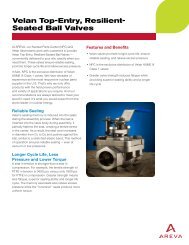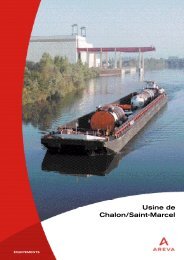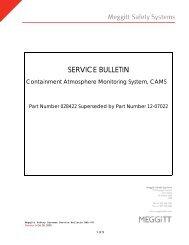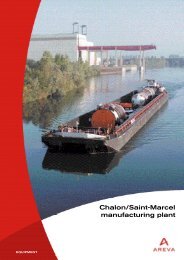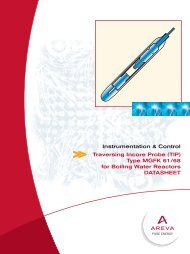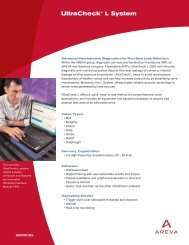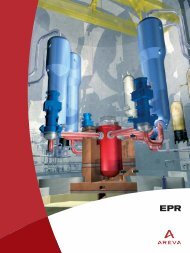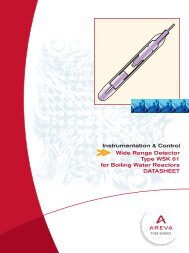Download - AREVA
Download - AREVA
Download - AREVA
- No tags were found...
You also want an ePaper? Increase the reach of your titles
YUMPU automatically turns print PDFs into web optimized ePapers that Google loves.
Cover StoryReactor Vessel Penetration Bottomased on the information“Bcurrently available, thedegradation that occurred at theSouth Texas Project (STP) Unit 1 inthe US may be relevant to otherPWR facilities.” Is this a new area ofconcern for nuclear power plantoperators? The answer to that questionmay lie in the root cause analysiscurrently underway on metallurgicalmaterial taken from STP.This quote, taken from a NuclearRegulatory Commission (NRC)Information Notice 2003-11 issuedon August 13, 2003, discusses thepreliminary findings at the STP Unit 1relating to the boron depositsdiscovered on the bottom-mountedincore (BMI) nozzles.Reactor Vessel HeadDegradationThe US nuclear industry and the NRChave been dealing with the problemsassociated with stress corrosion crackingfound on reactor vessel (RV) headsin US plants for the last several years.Alloy 600, out of which the controlrod drive mechanisms (CRDM) weremanufactured when the plants wereoriginally built, has been implicated.However, until recently, indications ofleakage had been confined to RV heads.With specially designed tools, Framatome ANP inspected all ofSTP’s bottom-mounted incore nozzles following the discovery ofa small amount of a powdery substance on two of the nozzles.The Alloy 600 problem was not newwhen it was first noticed in the US.The RV head problem was originallydiscovered in France. Electricité deFrance (EDF) chose to replace all theirRV heads rather than go throughrepeated inspections and repair. In theUS, however, the NRC required firstvisual inspections and then ultrasonicinspections of the country’s PWRRV heads following the discovery ofmajor degradation in FirstEnergy’sDavis-Besse plant in Ohio.10 Advanced Nuclear Power N O 9 November 2003



